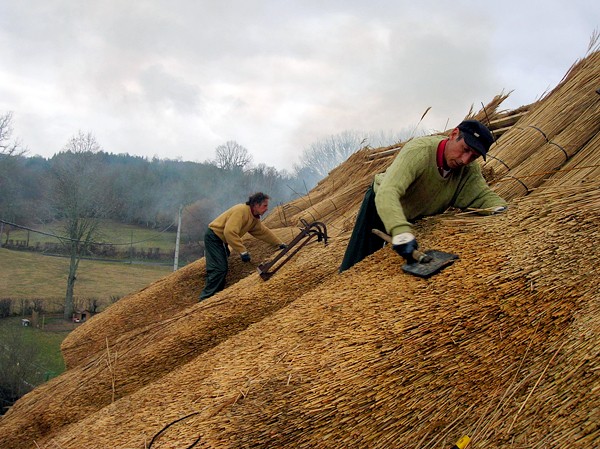Armand Klavun, Chaumier

France has a long history of using chaume, or thatch, as roofing material. When the Romans first arrived in the 2nd century BC they found the Gauls living in settlements where dwellings, barns and stables were all thatched, and as late as the early 20th century thatch still covered 75 percent of the houses in the Massif Central. Today, toitures de chaume still dot the French countryside, and thatcher Armand Klavun and his team are finding that interest has recently been rekindled in this natural, sustainable and surprisingly high-performance roofing material.
Based in the south-central region of Limousin, Klavun works on both heritage buildings and new constructions, bringing 30 years of experience to the creation and repair of reed and rye straw roofs. Both are traditional materials: the supple straw is a useful byproduct of the rye once grown as the primary food grain in much of France, and the stiffer reeds are a constantly renewed resource that thrives in marshy regions.
In thatching, everything is done by hand: to construct a roof the chaumier attaches the material in bundles to a framework, building it up to a thickness of about a foot. Each bundle is then untied and spread out so that the overlapping material carries water efficiently off the roof. The stalks, several feet long, are fastened to the framework at several points along their length to discourage both nest-building birds and shelter-seeking rodents. The result is a watertight roof that provides excellent thermal and sound insulation and lasts, with proper maintenance, for at least 50 years. It’s also beautiful, and Klavun and his team, passionate about their métier, can even sculpt into the thatch any design a client desires. website
Originally published in the December 2009 issue of France Today
Share to: Facebook Twitter LinkedIn Email
Leave a reply
Your email address will not be published. Required fields are marked *



